Last Updated on June 13, 2025
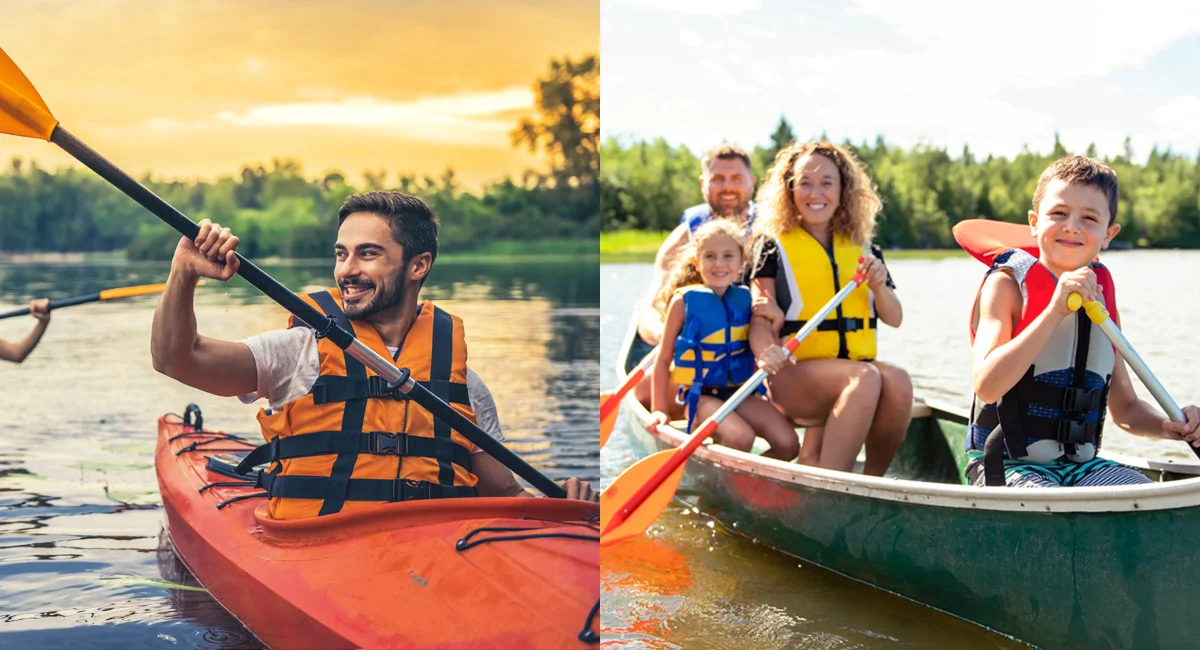
Are you ready for a wonderful waterway adventure? Are you unsure where to start? Maybe you want to try a canoe? Or maybe a kayak is more your speed? Well, your friends here at Ocean State Job Lot want to show you exactly what the difference is between the two options.
The difference is this:
- Canoes are boats with an open hull design, making them suitable for multiple passengers of all skill levels.
- On the other hand, kayaks are sleek, a little sportier, closed boats designed for solo or tandem paddling.
Throughout this blog post we’ll give you some side-by-side comparisons so you’ll have the knowledge to make the right decision.
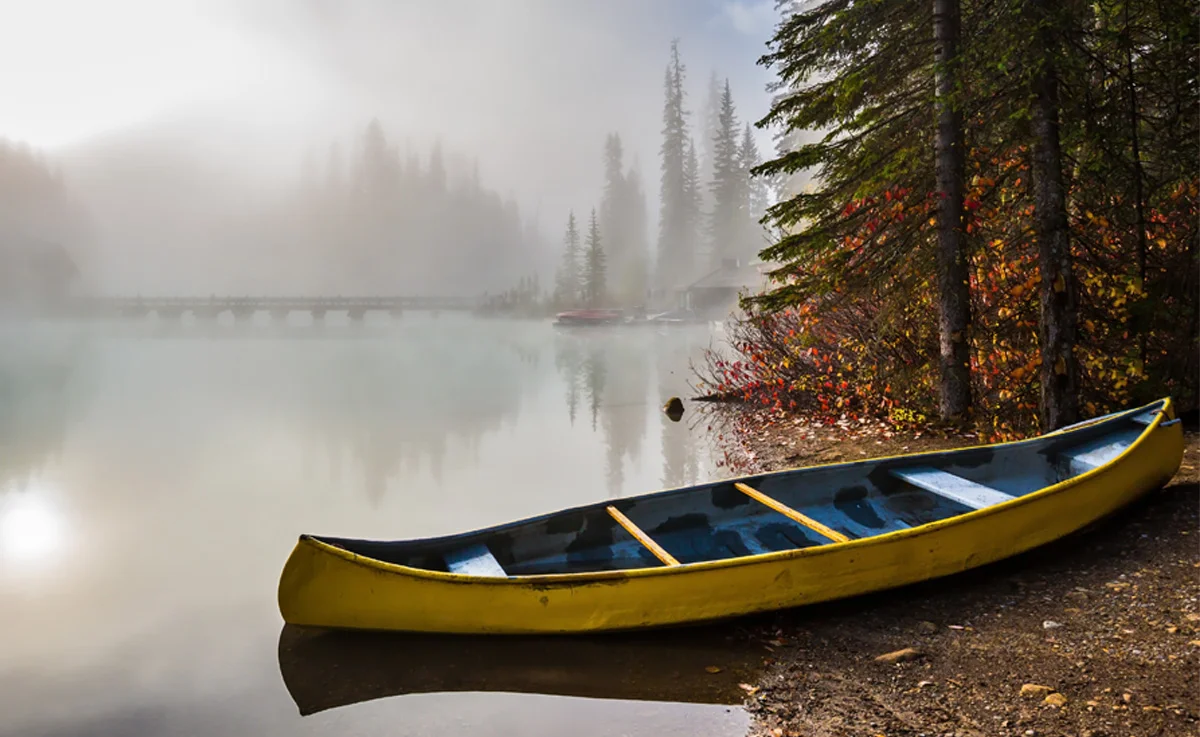
Historical Background and Evolution
Both canoes and kayaks have evolved over the course of time. Once, they were relied upon as a very important mode of transportation, whereas today, they are looked upon as something suited for sport and pleasure.
Canoes, which have been deeply rooted in many cultures worldwide, have been crafted from natural materials like birch bark or dugout logs, and used to navigate rivers and lakes. Now, in today’s modern times, they are traditionally made from aluminum and fiberglass which provide enhanced durability.
Kayaks, which you can find in a wide selection at Ocean State Job Lot, originally came from Arctic communities and were used by hunters as part of their everyday pursuit of food. They had animal skin stretched over their wooden frames for more durability. Today, kayaks are made with advanced materials like polyethylene to reflect a fusion of tradition and technology. This advancement in technology has increased use in both recreation as well as in rougher seas, depending on personal preference.
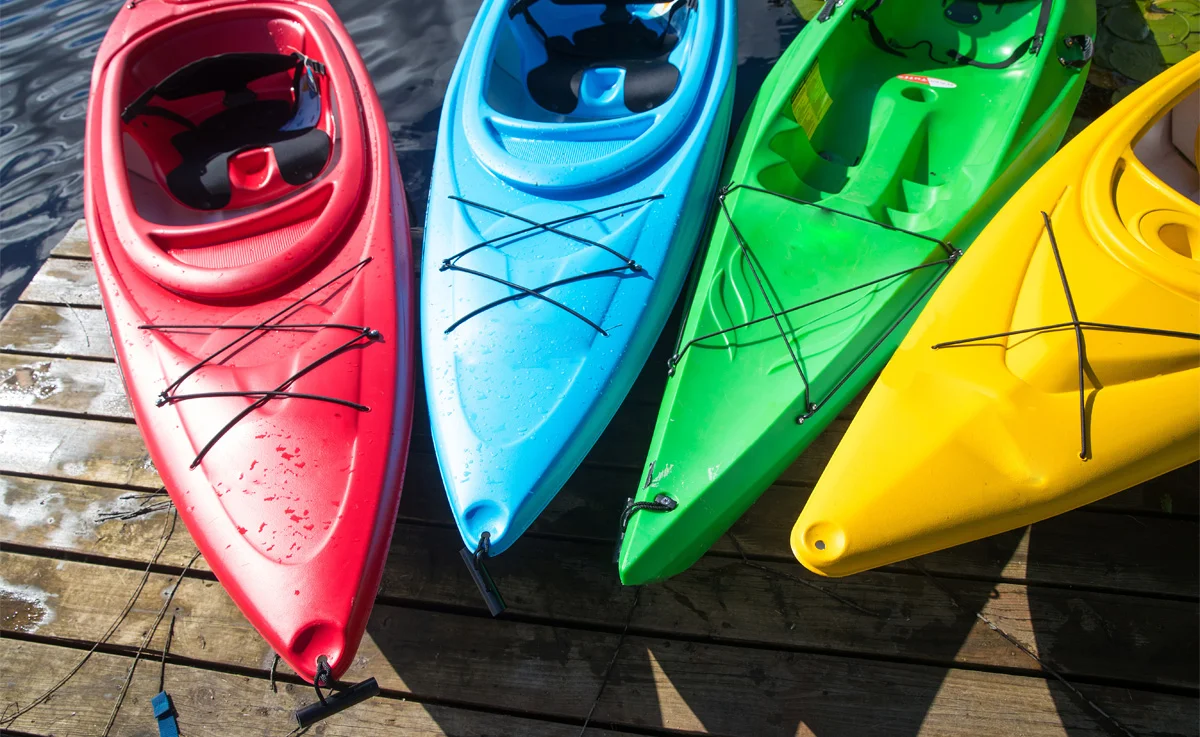
Design and Structure: A Comparative Analysis
Canoes:
With an open and spacious design, they are versatile and perfect for group experiences. Canoes are made with stability as a priority, featuring a flat bottom which makes it better for family outings or a nice, slow, leisurely paddle. If you’re into trying a water adventure with others, this is the one for you.
Kayaks:
In contrast, kayaks have a sleek, streamlined design that’s tailored for agility; perfect for one or two-person tandem adventures. The enclosed cockpit provides a more intimate connection with the water, which will enhance the paddler’s control. Depending on your preference, kayaks come in sit-on-top or sit-inside styles. While canoes are the more laid-back of the two, kayaks will give you a more precise navigation through narrow waterways and give a sporty workout.
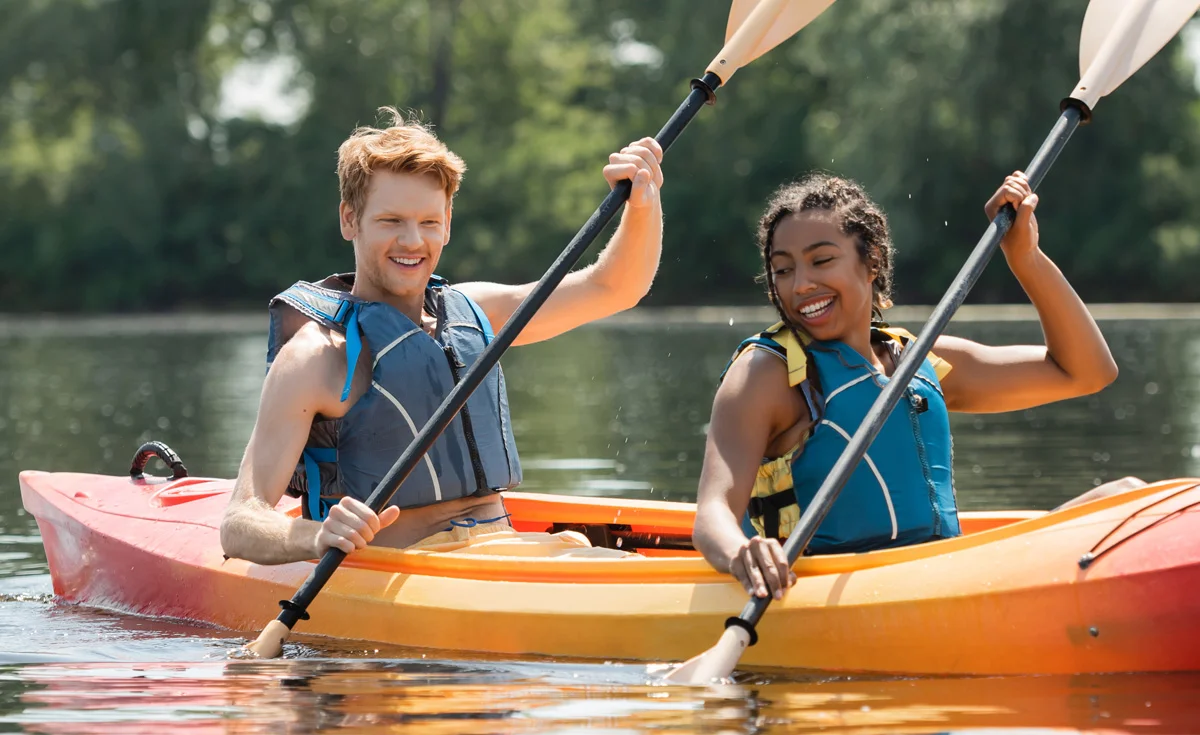
Paddling Techniques and Styles
If you want to get the most out of your canoe or kayak, you’ll want to learn the right paddling techniques. Yes, there is a difference! Whether you opt for a kayak or a canoe, you can start rowing the exact same way, and be just as effective.
For canoes, teamwork is key. Those who use kayaks call it a fundamental J-stroke. This is where each paddler in the canoe extends the paddle forward and makes a subtle J-shaped turn at the end of the stroke. This will keep the canoe on a straight course. It’s crucial to use consistent communication with everyone in the canoe, if you want to move in any direction.
In kayaking, because of the enclosed cockpit design, there’s a more individualized approach to paddling. The fundamental technique is a forward stroke in which the paddler pulls the blade straight back through the water, propelling the kayak forward efficiently. For precise turns and adjustments, the sweep stroke comes into play, involving a wide arcing motion to one side of the kayak.
And of course, you can find the right paddle just for you at Ocean State Job Lot.

Performance and Use Cases
The performance of the kayak or canoe will depend on your intended usage. The open layout of the canoe will provide a smooth, leisurely ride in the water, and also has lots of extra padding and space for people and products. Think about using a canoe if you are going on an extended trip.
Conversely, kayaks, with their streamlined and agile structure, are designed for performance in various water conditions. They’re going to be able to maneuver swiftly through narrow waterways for a faster, fun ride. Speed and control are what you can expect in their performance.
Canoes can offer the stability for fishing or relaxing outings, while kayaks cater to adrenaline-seekers and enthusiasts.

Comfort and Accessibility
The choice between a canoe or a kayak extends beyond mere functionality, with comfort and accessibility playing pivotal roles in the decision-making process. Canoes, with their open and spacious design, are renowned for accommodating various body types and providing a more relaxed seating arrangement. This makes them an appealing choice for those seeking a comfortable, leisurely paddle, or for families looking to share the experience.
Kayaks, with their enclosed cockpits, offer a snugger fit that provides a sense of control and connection with the water. While this design may appeal to those craving a more intimate experience, it’s essential to consider individual comfort preferences and physical limitations.
Accessibility is another key factor. Canoes, being open and easy to enter and exit, are often favored by beginners or individuals with mobility concerns. Kayaks require a more deliberate entry and exit, come in various designs, including sit-on-top models, which enhance accessibility and cater to a broader range of users.
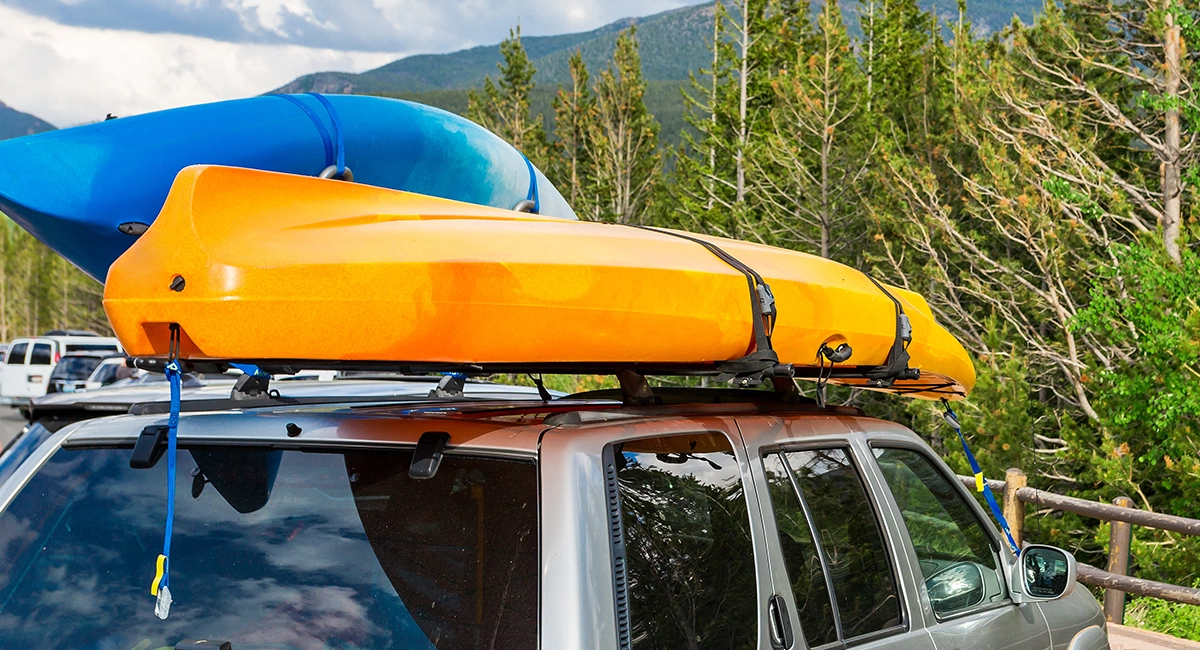
Transportation and Storage Considerations
No matter what you choose, you’ll still want to give very thoughtful consideration on how to get your canoe or kayak to the water. Transportation and storage is paramount for a seamless and enjoyable paddling experience. You don’t want to damage either along the way. Roof racks or specialized carriers can make hauling easier, but the size and weight of the vessel must align with your car’s capacity.
Just as important is where you store your canoe or kayak at home. Whether you’re a weekend paddler or a frequent user, finding a suitable place to store your canoe or kayak is crucial for maintaining their integrity. Adequate space in a garage, shed, or dedicated outdoor rack can protect the watercraft from the elements and prolong their lifespan. Moving your kayak or canoe too often can cause unnecessary damage, so you’ll want to find an optimal storage space.
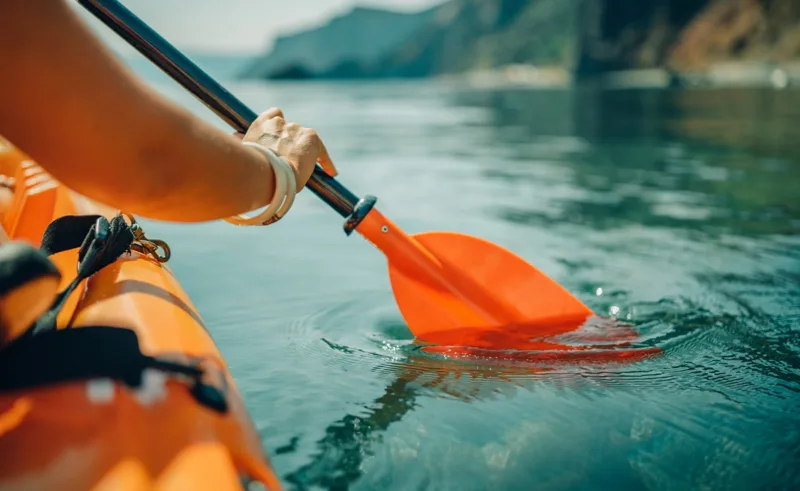
Making the Right Choice: Canoe or Kayak?
In the end, the positives for choosing a canoe will be the negatives for getting a kayak.
Kayak Pros:
- Speedy
- Built for one or tandem
- Maneuverability
Canoe Pros:
- Room for gear
- Slow and steady
- Easier Paddling
- More suitable for beginners and families

Your decision whether to pick between a canoe or a kayak will ultimately come down to your individual preferences and specific needs. What do you really want to do in the water?
If you want a relaxing, shared experience, go for the canoe. If you want a more athletic, individual adventure, grab yourself a kayak. If you want a smooth, tranquil ride, stick with a canoe. But, if you want the thrill of raging waters, go with a kayak.
Or, better yet, try them both! As always, safety first. Wear a life jacket and make sure you are trained on the dangers of being in the water.
If you’re still undecided, make that first step and stop in your local Ocean State Job Lot to check out our full selection of kayaks today.


